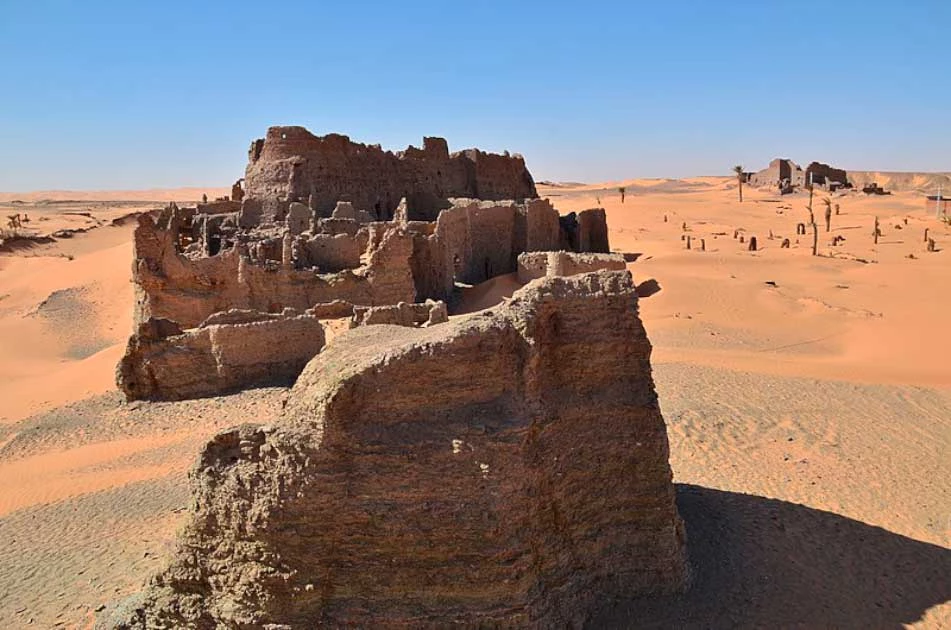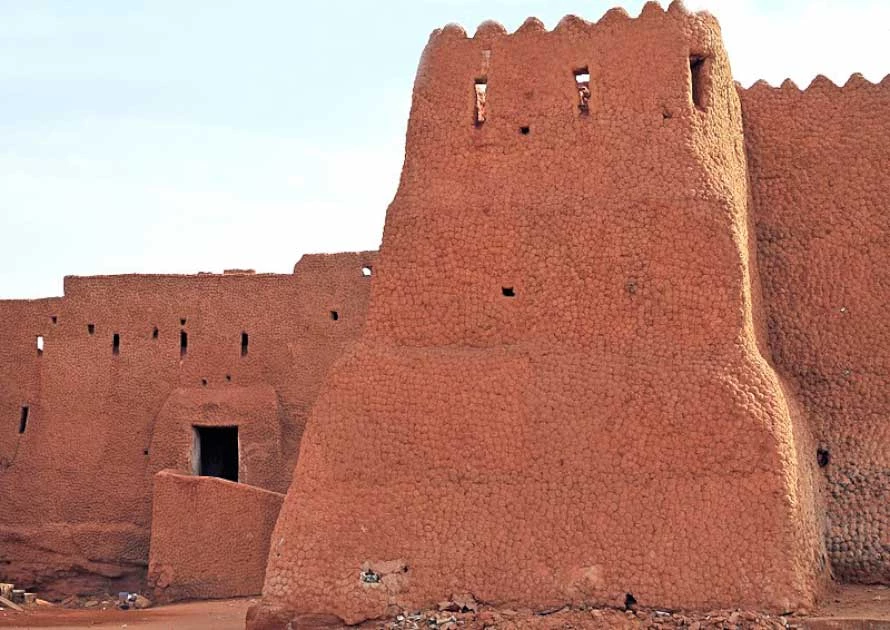Circular and isolated in the desert, the Ksar Draa in Timimoun rises magnificently in the middle of a huge bowl of sand dunes. However, the history of this place has been lost to the sands of time.
These days it is quite difficult to get to especially without the help of expert guides. Once there, though, the view of the architecture and its environment is almost indescribable. But where did it come from and who built it?
Origins
The local history of this monument is relatively scarce. Some sources claim that it was occupied by Jews of the Timimoun region in southern Algeria. There is little that remains of the structure that helps to understand the original function.
The circular wall that surrounds the structure is about 2 meters (6.6 feet) high. There is also a double wall, the outside wall is made of stones bound with clay and the internal one is made up of only clay. The access point is to the north.
Additionally, there are a series of rooms on three levels that are built between the two walls. However, no staircase exists that can be seen today. It has led to theories suggesting that all of the stairs were inside. What adds to the mystery is that there do not seem to be any communicating rooms or any windows facing outwards.
The term Ksar is derived from the North African term for a fortified village. In Arabic, it would be known as a qasar which itself may come from the Latin term castrum, or castle. The Berber word for ksar is aghrem. It could be an equivalent word for igherman.
- Who Built the Abandoned City of Djado? A Saharan Mystery
- What is Rujm el-Hiri? Puzzling Labyrinth of the Golan Heights
Ksour in the Maghreb areas consists, usually, of attached houses with a granary connected to it. They may also have mosques, baths, ovens, or shops. They are often found in mountainous regions which makes their defense capabilities more significant. As with Ksar Draa, they come with an enclosing wall.
A Caravanserai Toll?
This is a term that is used in common with Ksars. A caravanserai here refers to a building made up of a wall that enclosed a large courtyard with a portico. This was used to stop caravans from crossing the desert and thus put a limit on trade and allow the controlling power to tax those coming through the area.

Inside these structures, normally, there would be rooms for travelers to be used freely and allow them to rest and recuperate. Some caravanserai had libraries and thus it has been assumed that these areas also acted as a cultural hotspots where ideas and beliefs could be shared or discussed. Many travelers from around the world will have stopped at these on their journey to the African trader centers.
This caravanserai is a typical architecture type of Persian culture but there are many examples that have been found within North Africa and throughout the Near East. Structurally, it is clear that these were built by master engineers probably belonging to the Sufi order.
These engineers would be applying the principles of geometry and proportions that were used in the construction of mosques. However, the style of the Ksar Draa does look different from other Caravanserais of the period.
So much for a purpose, but how about a date? There have been many theories put forward to try and help date this structure. However, it has been a real struggle because of the peculiarity of the building.
Most recently, there has been an American team of scholars who arrived in Timimoun in the 1980s. They used expert guides and gathered supplies before traveling through the dunes. When they reached the building, they asked the guides to leave them and return in a week. Nothing that they found inside has been publicly helpful in dating the strange structure.
Stumped by the site itself, other options have presented themselves. The best thing that historians and archaeologists can do to help understand this site is to dive into similar sites across the North African coast.
The Maghreb
The Maghreb is an Arabic term that means west and refers mostly to the West of the North African countries that were under the control of Islam from the 7th century. In modern-day terms, it stretches from Mauritania to Libya across the mountains and at the Northern fringes of the Sahara Desert.
These places were a particular hotbed of violence and destruction and thus fortified cities were developed. They were quite often imposing mountain defensive walls with elaborate gates and tightly packed buildings. Many were established in the late 7th century and were continuously redeveloped.
One such example that exists and that there is a little more information about is the Qal’a of Beni Hammad. It is located in the North-East town of M’Sila in Algeria. It is located in a mountainous setting and was founded in the 11th century by Hammad, the Son of Bologhine, the founder of Algiers.
However, it was abandoned in 1090 under threat of invasion. It was a magnificent complex that highlights the complexity and ingenuity of Islamic civilization in this period. This building served as the main capital of the Hammadid Emirs.
It was made up of around 7km of fortified walls with many monuments and a huge Mosque. The Mosque had 13 aisles with eight bays and was one of the largest in Algeria. It is not too far of a leap to suggest that the Ksar Draa was of a similar fashion.
The Ksar Draa
This magnificent structure holds many mysteries and will continue to do so until more extensive archaeological investigations can take place. There are many similar structures in North Africa, but none match the peculiarities of the Ksar Draa.

It was built with strong foundations and strong walls and would have provided a strong defensive location for any civilization. These buildings highlight the complex identities of the civilizations that occupied this area of North Africa. It is well worth a visit, but it is very difficult to get to without the expert guidance of those explorers who have made the journey before.
Top Image: There are several Ksar at Timimoun, but the Ksar Draa stands apart with its high circular walls, surrounded by dunes. Source: Taguelmoust / CC BY-SA 3.0.
By Kurt Readman